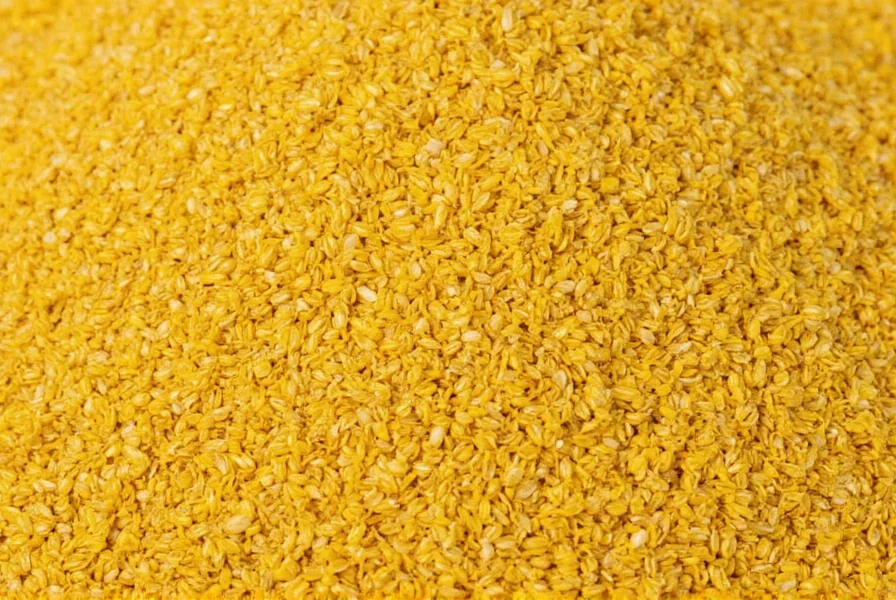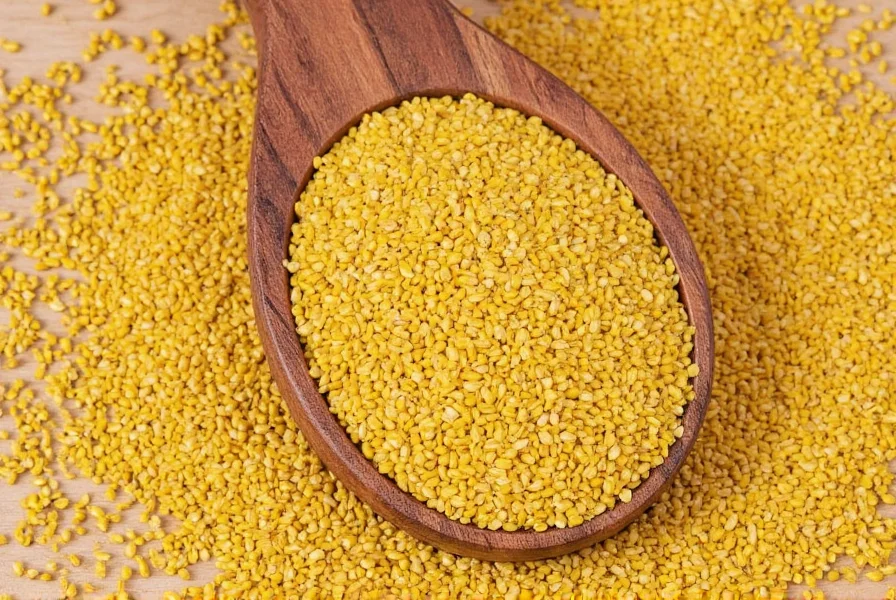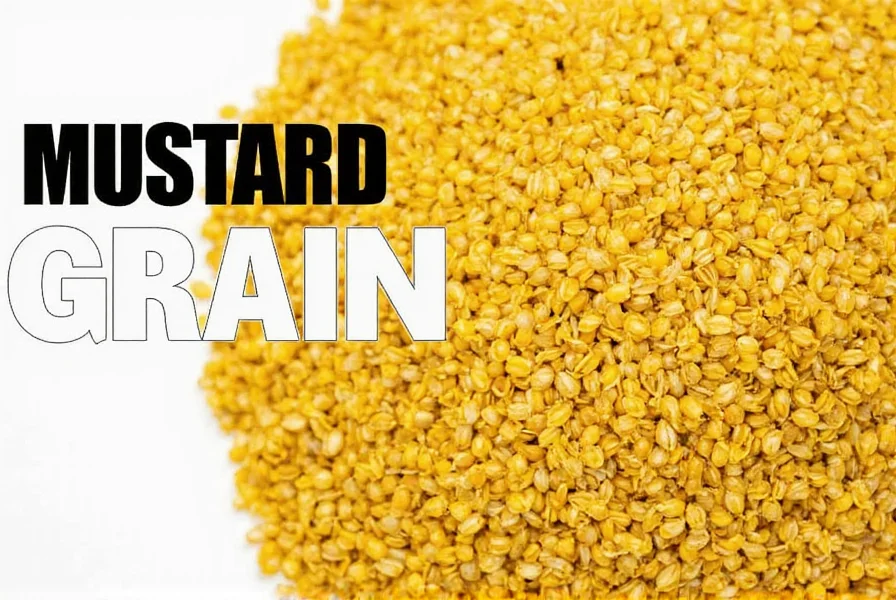Mustard grains represent one of the world's oldest cultivated spices, with archaeological evidence dating their use back to prehistoric times. Understanding these tiny but mighty seeds unlocks culinary possibilities across global cuisines while providing valuable nutritional benefits.
Understanding Mustard Grain Varieties
Not all mustard seeds are created equal. The three main commercial varieties differ significantly in flavor intensity, size, and culinary applications. Yellow mustard seeds, the mildest variety, measure approximately 2mm in diameter and feature a pale yellow color. Brown mustard seeds, slightly smaller at 1.5mm, deliver moderate heat levels and form the base for many European and American mustards. Black mustard seeds, the smallest at just 1mm, pack the most intense flavor and are essential in traditional Indian cooking.
| Variety | Size | Flavor Profile | Primary Culinary Uses |
|---|---|---|---|
| Yellow/White | 2mm diameter | Mild, slightly tangy | American yellow mustard, pickling, spice blends |
| Brown | 1.5mm diameter | Moderate heat, complex flavor | Dijon mustard, European preparations, curry powders |
| Black | 1mm diameter | Intensely pungent, sharp heat | Indian cuisine, traditional mustards, tempering |
Culinary Applications of Whole Mustard Seeds
Professional chefs and home cooks leverage mustard grains in various preparation methods to maximize flavor potential. Dry roasting whole seeds before grinding enhances their nutty characteristics, while soaking in liquid activates enzymes that create that signature mustard heat. The difference between yellow and brown mustard seeds becomes particularly apparent when making homemade condiments—yellow seeds produce the familiar bright yellow American mustard, while brown seeds yield the more complex flavor of Dijon.
Traditional Indian cooking employs a technique called tadka or tempering, where mustard seeds crackle in hot oil to release essential oils before adding other ingredients. This method showcases how to use whole mustard seeds effectively in recipes without grinding. For optimal flavor retention, store mustard grains in airtight containers away from light and heat—properly stored seeds maintain peak quality for 3-4 years, unlike pre-ground spices which lose potency within months.

Nutritional Composition and Potential Health Benefits
Nutritionally, mustard grains deliver impressive value relative to their size. A single tablespoon (9g) provides approximately 59 calories, 3g of healthy fats, 3g of dietary fiber, and significant amounts of selenium (23% of daily value), magnesium (10%), and manganese (9%). These tiny seeds contain glucosinolates—compounds studied for their potential anti-inflammatory and antioxidant properties.
Research suggests that consuming mustard seeds may support metabolic health through several mechanisms. The compound allyl isothiocyanate, responsible for mustard's pungency, shows promise in preliminary studies for supporting healthy blood sugar regulation. Additionally, the high fiber content contributes to digestive health, while the selenium content supports thyroid function. However, individuals with thyroid conditions should consult healthcare providers before consuming large quantities, as mustard seeds contain goitrogens that may affect thyroid hormone production.
Growing Mustard for Seed Production
Cultivating mustard plants specifically for seed harvest requires attention to timing and conditions. Mustard varieties grow best in cool to moderate temperatures (50-75°F), making them ideal for spring or fall planting in most climates. For optimal seed production, allow plants to fully mature—harvesting occurs when seed pods turn brown but before they split open. The process of threshing separates seeds from pods, followed by thorough drying to prevent mold during storage.
Sustainable mustard cultivation offers environmental benefits including soil improvement through nitrogen fixation and natural pest repellent properties that reduce the need for chemical interventions. Many organic farmers incorporate mustard as a cover crop specifically for its biofumigant qualities, where decomposing mustard plants release compounds that suppress soil-borne pathogens.

Practical Storage and Usage Tips
Preserving the flavor and nutritional value of mustard grains requires proper storage techniques. Exposure to light, heat, and moisture rapidly degrades quality. Store whole seeds in opaque, airtight containers in a cool, dark pantry location. For extended storage (beyond one year), refrigeration maintains optimal quality. Never store mustard seeds near strong-smelling foods, as they readily absorb odors.
When incorporating mustard grains into recipes, consider the timing of addition. Adding seeds early in cooking mellows their flavor, while adding them toward the end preserves more pungency. For traditional mustard preparation, the combination of seed variety, liquid type (vinegar, wine, water), and grinding technique creates dramatically different end products—from smooth Dijon to coarse whole-grain preparations.
Frequently Asked Questions
What's the difference between mustard seeds and mustard grains?
Mustard seeds and mustard grains refer to the same product—the small spherical seeds harvested from mustard plants. The term "grains" typically appears in culinary contexts, while "seeds" is the botanical term. Both yellow and brown mustard seeds are commonly called grains when discussing cooking applications.
Can you eat mustard seeds raw?
Yes, mustard seeds can be consumed raw, though their flavor remains dormant until activated. Raw seeds have a nutty, mild taste. The characteristic pungency develops when seeds are crushed or chewed, releasing the enzyme myrosinase which reacts with sinigrin to create the spicy compound allyl isothiocyanate. For maximum flavor in recipes, toast or soak seeds before use.
How long do whole mustard seeds stay fresh?
Properly stored whole mustard seeds maintain optimal quality for 3-4 years. Store in an airtight container away from light, heat, and moisture. Signs of deterioration include loss of pungency, rancid odor, or visible mold. While not dangerous to consume when old, stale seeds lack flavor intensity and nutritional value compared to fresh seeds.
Are mustard seeds safe for people with thyroid conditions?
Mustard seeds contain goitrogens, compounds that may interfere with thyroid function when consumed in very large quantities. For most people, normal culinary use presents no risk. However, individuals with existing thyroid conditions should consult their healthcare provider about appropriate consumption levels. Cooking reduces goitrogenic compounds, making cooked mustard preparations generally safer than consuming large amounts of raw seeds.
What makes black mustard seeds hotter than yellow varieties?
The heat difference stems from varying concentrations of sinigrin, the compound that transforms into pungent allyl isothiocyanate when seeds are crushed. Black mustard seeds (Brassica nigra) contain higher sinigrin levels than yellow seeds (Sinapis hirta). Additionally, black seeds have a thinner seed coat, allowing faster enzyme activation. This explains why traditional Indian recipes specify black mustard seeds for dishes requiring intense heat, while yellow seeds work better for milder applications like American yellow mustard.











 浙公网安备
33010002000092号
浙公网安备
33010002000092号 浙B2-20120091-4
浙B2-20120091-4